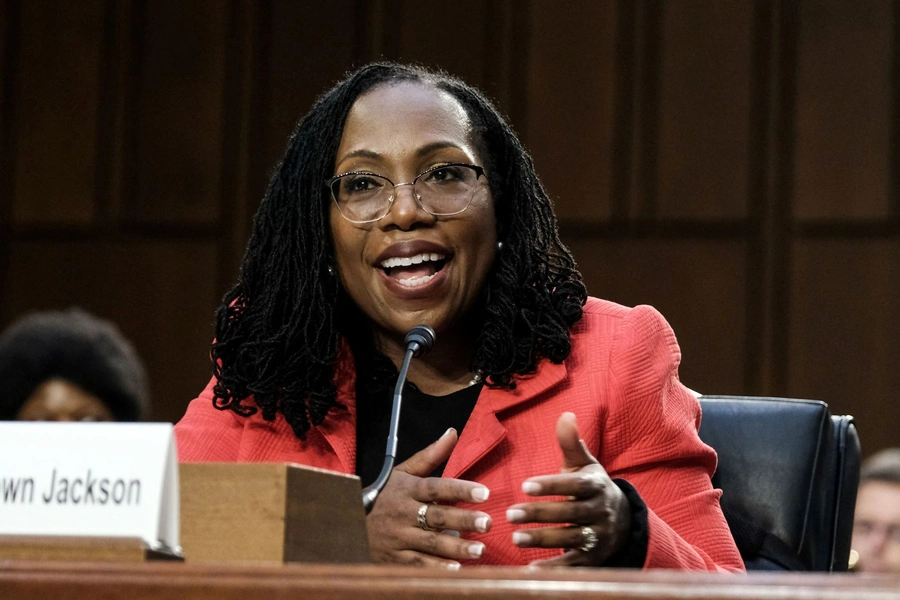Justice Jackson vs. Dominant Narrative


Since the “beginning” of America’s official history, black people were seen as undomesticated, savage-like, and in need of direction from white people (men). Five centuries later and the role of Black women has dramatically shifted, though most of the racist narratives haven’t. White men continue to hold most of the power and control over the dominant narrative. Pictured to the right is Supreme Court Justice Jackson. She is the first Black woman to serve as a Supreme Court Justice. Like every other Justice, she had to be put through a series of questions. Throughout this process, she faced offensive and insensitive comments, and despite Congress members intentionally misinterpreting her responses and trying to diminish her experience, she maintained her composure. In the photo, she seems to be smiling but she is not happy. She is keeping her composure and her frustration hidden behind the smile. Patricia Collins would argue that a black woman who wants to resist the dominant narrative must counter every stereotype given to black women. She cannot come off as too assertive, yet not easily deterred. She has to think rationally about every gesture and comment she makes. If Collins were to write about Jackson’s experience being vetted, she would talk about Jackson’s resistance to dehumanization and her ability to have self valuation and self definition. As a black woman, Jackson had to be confident. The photo on the left was taken from a fight that almost happened in Congress because a Congressman was upset with a colleague. Both were upset in these photos, yet, both are displaying the opposite of their stereotypes. If the roles were reversed, people would reduce Jackson to this event, even if she is highly qualified, because of the interlocking oppression black women experience. Plus the photo on the left reinforces that white men do not need to have the same rational thinking that marginalized groups do, even though they are seen as more rational by the dominant narrative. [Black] women are often reduced to their emotions, whilst men aren’t. This is an example of how the dominant narrative picks and chooses who gets viewed as what because if the roles were reversed, there is no way that Jackson could have kept her job or reputation.
Patricia Hill Collins, Learning from the Outsider Within: The Sociological Significance of Black Feminist
Thought, Social Problems, Volume 33, Issue 6, 1 December 1986, Pages s14–s32, https://doi.org/10.2307/800672
Welch, Hayden. 2022. “Women This Week: Ketanji Brown Jackson to Become First Black
Woman to Serve on Supreme Court” Council on Foreign Relations. April 8. Retrieved
January 31, 2023 (https://www.cfr.org/blog/women-week-ketanji-brown-jackson-become-first-black-woman-serve-supreme-court)

Comments
Post a Comment